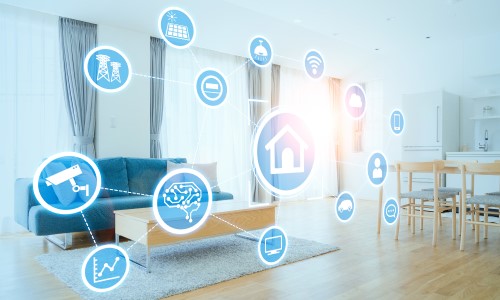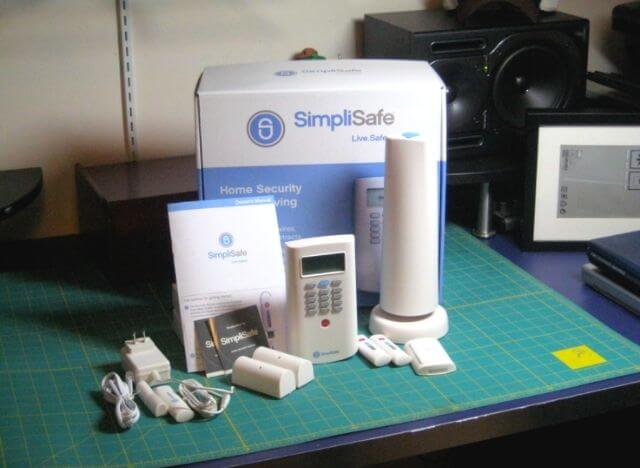
You have many reasons to invest in a self monitored home security system. They are easy-to-install and to use. They are also cost-effective and reliable. You can also find budget-friendly options, such as Wyze and Kangaroo. Cove Home Security is an affordable option for budget-minded users, but it does not have access to the app and has a limited subscription.
Canary's HD 1080p security camera system can be installed in minutes
Canary 1080pHD security camera system is an excellent option for homeowners who don’t know where they should start when installing security cameras. It's flexible and WiFi enabled. It also produces fair-to-good video quality. It is not the easiest security camera system to set up. However, it has its limitations. It is expensive to purchase and can be difficult to pair with Wi-Fi networks.
Canary's 1080p high definition security cameras make installation easy. The Canary All-in-One Home Security Device features a 1080p HD camera, built-in siren, and arming and disarming capabilities. You can also use Canary to send an alert to authorities in case of burglary or intrusion. You can use the Canary app to view live, track events, and access an options menu. It monitors temperature, humidity, and air quality.

Abode’s selfmonitoring system can be used easily
Abode's self-monitored home security system is easy to install and use. It consists of an Abode Gateway, power cord, Ethernet cable, and security sensors that attach to your home's entry points. You can use the Abode Gateway during power outages by having battery backup power. Abode offers customer service via live chat, email, and phone.
Abode's self-monitoking home security system is compatible with various smart home systems and allows you to check on your home remotely via the app. You have the option to choose from the Basic plan or the $8 monthly Connect plan. Both include cellular backup, as well an alarm signal being sent directly into your phone. Apple HomeKit is a popular smart home platform that can be used with the Abode security system.
Ring's self-monitoring system is compatible with Apple HomeKit
Ring's self monitored home security system is a great choice if you're looking for a home security system with an Apple HomeKit interface. It is easy to set up and affordable. The alarm sounds when there is a potential intruder. It features both cellular connectivity as well as a battery backup. The Ring system works with select smart outlets and smart locks as well as Amazon Alexa.
Ring's service plans do not require you to sign an annual contract. Self-monitoring the system is free and you only need to pay for live alerts. A subscription plan is also available starting at $3 per month and includes enhanced detection and video storage. Ring also offers Pro plans for $20 per month that offer professional monitoring.

Scout's self monitoring system does not have cellular connectivity
Scout is a self-monitoring device that allows you to remotely control your cameras, sensors, alerts, and more. Its app is useful for monitoring your home when you're away. The system's limited cellular connectivity makes it less useful. It is also difficult to use. Users should be prepared for occasional crashes.
Scout's self monitoring system is very affordable when bought individually. However, users need to consider additional costs such as cellular connectivity or building systems. For example, users who purchase the indoor camera will need to pay $9.99 per month to receive notifications, while users who buy the second camera will pay another $2.99 per month for cloud storage.
FAQ
Are motion sensors capable of triggering alarms?
Motion sensor alarm systems have been around for decades, and they have become increasingly popular due to the rising number of break ins and thefts. These alarms are too costly and won't work in cabinets. It is worth looking into a motion sensor system if you want to protect yourself from home intruders.
How do I decide between the different types of home security system?
You should consider what kind of threats are in your area. If there is a lot crime in your area, you may want an alarm to sound when someone enters your home. In rural areas where there are fewer burglaries, you might not need as much security.
It is also worth considering whether you are willing and able to pay more for certain features. Some systems come with built-in cameras while others don’t. Some allow you to monitor your house remotely, while others require you to be physically present in order to view the footage.
What is the cost of a home security system?
A home security system is about $2,500. This may seem like a lot of money, but it is actually very cheap compared to the peace of mind you'll gain by having a safe and secure home.
What is the difference between surveillance and security cameras
Surveillance cameras may be used to monitor, but security cameras can also be used to protect.
Each type of camera has its pros and cons. The only thing that distinguishes them is the type and quality of images they produce. Surveillance cameras record video in slow motion, so you can watch what's happening in real time. On the other hand, security cameras only record video and still pictures, which is saved to review later.
Are there any real reasons to have a home alarm system?
Home security systems are essential if you have a home. You don't have to be worried about a burglar breaking into your home. They'll take anything they want, including expensive electronics and jewelry. They can even take everything if your doors are unlocked.
Your home is protected by a home security system that alerts you to any potential dangers. You can view the recorded footage and receive alerts from your mobile device when motion is detected.
You don't have to invest in a sophisticated home security system if you prefer not to. A simple DIY camera will do the trick. These cameras allow you to see who is at your front door and notify you when they are entering or leaving. These devices will not help stop intruders entering your home.
Statistics
- Depending on your insurance, 24/7 professional monitoring may qualify you for as much as 15% off your premium. (safewise.com)
- (In my experience, the discount on my home insurance covered about 25 percent of the subscription of an average plan, but your mileage may vary depending on your location and the size of your home.) (theverge.com)
- Most home security companies will charge you around 75% of the remaining term of your contract if you cancel early—and some require 100%.Related questionsWhat type of contract length can I expect from security providers?Home security system cancellation (safewise.com)
- Depending on your insurance, 24/7 professional monitoring may qualify you for as much as 15% off your premium. (safewise.com)
External Links
How To
How to install a Smart Home Wireless Security System
How to install a smart home wireless security system
The first step is to choose what kind of security system you want for the home. There are many different types of systems available such as door locks, motion sensors, keypads, cameras, and even alarm systems. The most common security system types include:
-
Door Locks: If you only want to prevent anyone from entering your home without you permission, then this option is for you. There are two types of deadbolt locks: lever locks and standard deadbolt locks. Lever locks are simpler to use than the standard one.
-
Motion Sensors – This is another way to control who enters your home. It works like a normal light switch except when someone moves near it, it turns on/off. Some motion sensors are equipped with a built-in camera, which sends images back to the phone when it detects movement.
-
Keypad-A keypad is another option that allows you to remotely enter codes. For example, if you leave your keys inside your car and forget them, you can use a keypad to open your garage.
-
Cameras: Most people think cameras are surveillance devices. However, there are other uses for cameras. You could place a camera outside your home and monitor it through your smartphone. Or you could set your camera up to automatically take photos every few seconds and store them on your computer. You can then review the photos later, whenever you wish.
-
Alarm Systems - An alarm system is used to alert you when something happens. These systems send a signal to your email or phone. When you receive the notification you can view the recorded footage to see exactly what occurred.
-
Smoke Detectors - Many homes don't have smoke detectors installed, but they should always be included in new construction. These are affordable and simple to install.
-
Flood Detectors Flooding is a serious threat to homeowner's homes. Flooding causes more damage than any other natural event. Flood detectors can be used to protect you from this threat.
-
Carbon Monoxide Sensors - This is another important safety device that's often overlooked. It is very dangerous as it is colorless with no odor and can be deadly. It is important to have a CO detector installed in order to protect your family.
-
Water Leak Detectors: Water damage is one of the most devastating things that can happen. Many people don’t realize how to check for water leaks until it’s too late. Leak detectors are a great addition to any property.
-
Burglar Bars - Burglars will avoid houses that look occupied. To deter potential thieves, you can add burglar bars to your windows and doors.